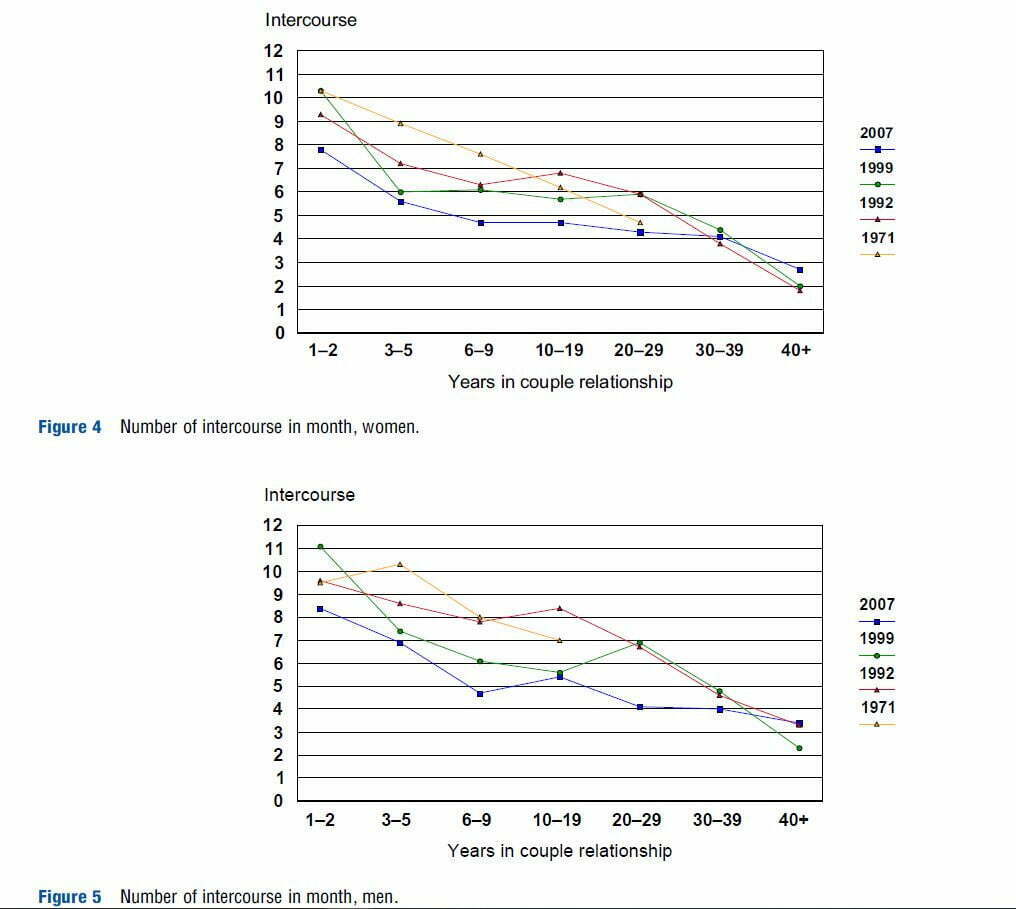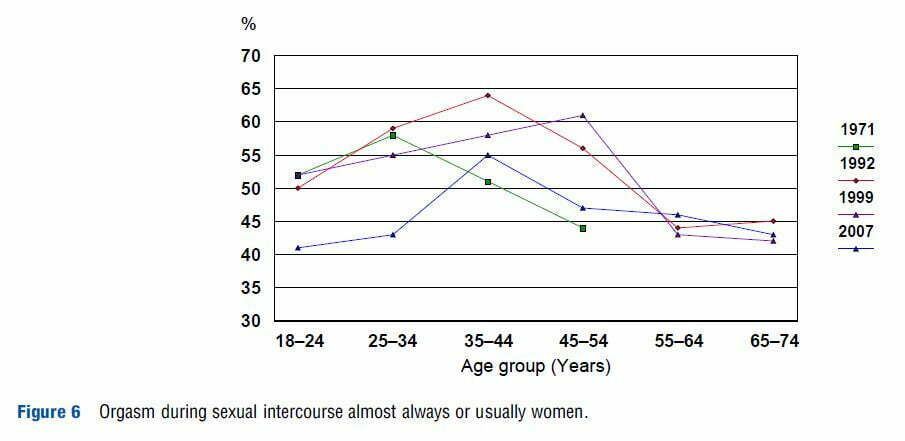Is it possible that we’re going about sex the wrong way? Finland was once the most sexually active country in the West. Yet sexual frequency and female sexual desire have dropped markedly, while the rate of women who have never orgasmed from intercourse has almost doubled. At the same time, masturbation has increased.
The Finnish Case
Finland is certainly not alone in these trends, but consider the following excerpts from a chapter entitled “Sex Life Challenges: The Finnish Case” * by Osmo Kontula [December 2015, DOI:10.1016/B978-0-08-097086-8.35017-6, Project: FINSEX]:
It is a great challenge to try to explain why in Finland, where gender equality and social welfare are highly progressed in international comparison, the lack of sexual desire is increasing, frequencies of sexual intercourse are decreasing especially in the middle age, and difficulties to experience orgasm in sexual intercourse are increasing. It was assumed that sexual well-being should improve along the progress of other social well-being.
… Sexual images and values are evolving into a more positive and more liberal approach. … Sex and nudity are a natural and everyday part of our public culture.
… [Earlier, this proved beneficial.] Two nationally representative surveys of the sexual behavior and sexual attitudes in 1971 and 1992 showed that people’s attitudes had become more liberal, sexual behavior more equal, women sexually more active, and that especially women’s sexual satisfaction had increased during the 20 years between these two surveys. The increasingly more copious, open, and versatile treatment of sexuality in the different media was estimated to have been one of the causes of this positive change (Kontula and Haavio-Mannila, 1995; Kontula and Kosonen, 1996).
[Intercourse rates dropping]
…[But] In 2007, both men and women were having less sexual intercourse by an average of once per month than in 1999. Put another way, the frequency of sexual intercourse among Finns had declined by approximately 20%. Frequencies were down for young and middle-aged people compared with all previous years.
… Lack of intercourse decreases the desire to have intercourse. …women who enjoyed sexual intercourse, and got more pleasure out of their sex lives than other women, were also less likely to experience lack of sexual desire. … Frequency of sexual intercourse declined most in the age group of 25–40-year-olds.
…The decline in intercourse frequency that has taken place in Finland is not entirely unique. For example, researchers in the United States and Germany found already in the 1990s that when measured by intercourse frequency, people were not very sexually active.
[Masturbation on the rise]
… One of the study’s key findings was that sexual activity among Finnish people was shifting to a significant degree from sexual intercourse to masturbation, also among couples. … When looking at how many men and women of various ages had been sexually active (sexual intercourse and/or masturbation) within the last week, it turned out that, in 2007, Finnish men and women were approximately as sexually active as they had been according to the two previous surveys conducted in the 1990s.
…Slowly, people have begun to emancipate themselves from their feelings-based relationships, moving from shared sex toward a more individualistic experience of sexual pleasure – masturbation or self-pleasuring. … To some extent, this is also a manifestation of a partial distancing between sex and love.
… The proportion of young and middle-aged women who had orgasms through sexual intercourse nearly always or most of the time had fallen by 10 percentage points, and even among men, the proportion of men who always reach orgasm through intercourse had dropped by 15%. There was up to a 20% drop in cohabiting women who had orgasms through intercourse most of the time. In young women, this was associated with the clearly increasing difficulties of having orgasms in the first years of a relationship. Hence, fewer young women considered their sexual relations ‘highly enjoyable.’*
Are humans opting for pseudo-sex on screens above connection with real partners? Is casual sex contributing to the appeal of screen sex by making sex superficial and less fulfilling? Is it time to try something very different, something that puts the emphasis on closer connection?
* Full chapter available from text entitled International Encyclopedia of the Social & Behavioral Sciences, 2nd edition , published by Elsevier





